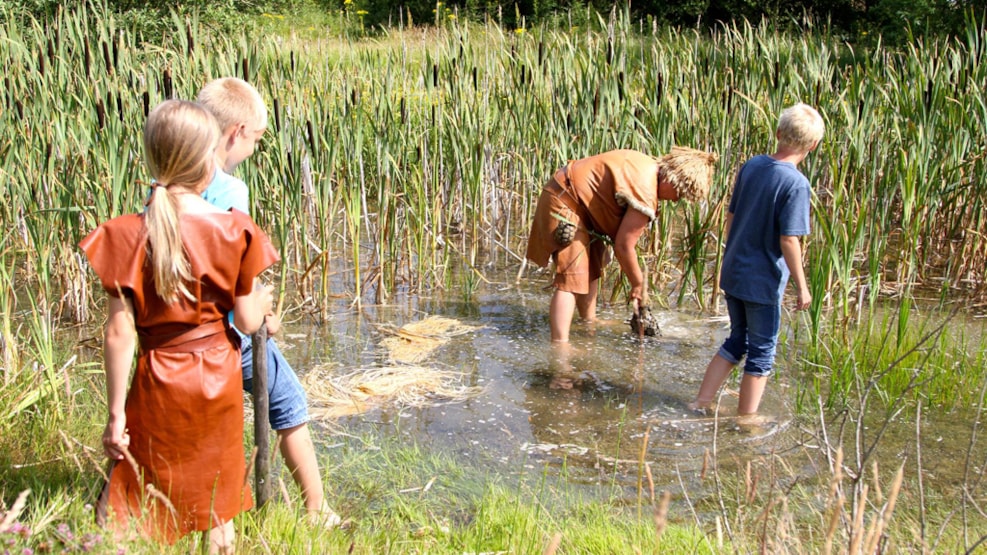
The Ertebølle Culture
At the end of the 19th century, it was decided to investigate what was going on with the heaps of shells that could be found along the northeastern Danish coasts.
A few heaps had already been studied by archaeologists, but little was known about the origin. But it was already known that there was a waste layer with meal leftovers in it, which is why the shell heaps were called kitchen middens.
Based on this, archaeologists began to examine the largest kitchen midden that was known.
It was in Ertebølle. The excavations took place in 1893-97 in collaboration with zoologists. The results were rewarding and numerous, and now you could describe and date a completely new culture in the Danish area, named after the place, it became internationally known as the Ertebølle culture.
The kitchen midden in Ertebølle was originally 140 meters long, 20 meters wide, and up to two meters deep.
It has accumulated over 1000 years, where the Ertebølle people after each visit to the settlement have left marine shells, meal remains, and other kinds of waste on the site. However, the studies also showed that the kitchen midden not only functioned as a manure area, but that people stayed on it and carried out a wide range of different everyday activities on it.
About 80% of the kitchen midden consisted of oyster shells, and in addition to this, it contained shells from mussels, mussels, and beach snails.
In the youngest layers, the mussels become more dominant. The composition of the marine shells and the development towards more blue mussels in the youngest layers is generally the same on all the Danish kitchen middens. Although the midden itself is well hidden in the ground, the site is one of the most important ancient monuments in the country, and new information signs guide visitors from the Stone Age Museum's car park to the kitchen midden. With the new signage, it will be easy to explore the heaps of the Stone Age people. At the same time, you are introduced to the area's Stone Age stories on the almost 1 km long walk along the field road that leads through the beautiful landscape out to the kitchen midden.